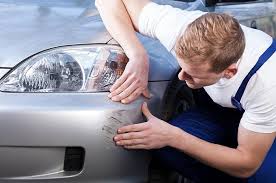
For car owners, maintaining the appearance and integrity of a vehicle can be just as important as keeping the engine in good condition. Dents, scratches, and minor collision damage can not only reduce a car’s value but also affect its overall aesthetic. While auto body repair has traditionally been a task for professionals at costly repair shops, more people are exploring home auto body repair as a cost-effective and empowering alternative.
This guide covers everything you need to know about home auto body repair — from basic tools to safety tips and step-by-step processes.
Why Choose Home Auto Body Repair?
1. Cost Savings
Professional body repair services can be expensive, especially for cosmetic fixes that may not be covered by insurance. Repairing minor dents or repainting small areas at home can save hundreds or even thousands of dollars.
2. Convenience
Repairing your vehicle at home means no appointments, no waiting in lines, and no being without your car for days at a time.
3. Skill Building
For DIY enthusiasts, learning how to fix auto body issues builds valuable hands-on skills. Over time, these skills can be applied to multiple vehicles or even turned into a side business.
Tools and Materials Needed
To get started with home auto body repair, you’ll need some basic tools and materials. These include:
-
Body filler (Bondo)
-
Sandpaper (various grits: 80 to 400)
-
Putty knife or spreader
-
Primer and automotive paint
-
Clear coat spray
-
Spray gun or aerosol cans
-
Paint mask and safety goggles
-
Gloves and coveralls
-
Dent puller or suction cup tool (for minor dents)
Optional but useful tools include a dual-action sander, a heat gun, and touch-up brushes.
Common Auto Body Repairs You Can Do at Home
1. Repairing Dents
Small to medium dents can often be repaired at home without professional tools.
Step-by-step:
-
Use a suction dent puller to pop out minor dents.
-
For more stubborn dents, drill a small hole, insert a screw or pull tab, and gently pull the dent out.
-
Sand the area with coarse-grit sandpaper to remove paint and rust.
-
Apply body filler, let it dry, and sand it smooth.
-
Prime and paint the area to match the rest of the car.
2. Fixing Scratches
Surface scratches can often be buffed out, while deeper scratches may require filler and paint.
Steps:
-
Clean the area with soap and water.
-
Sand the scratch with fine-grit sandpaper until smooth.
-
Use a rubbing compound for shallow scratches.
-
Apply touch-up paint or spray paint for deeper damage, followed by a clear coat.
3. Rust Removal
Rust not only looks bad but can also spread and weaken the vehicle’s structure.
Process:
-
Use a wire brush or sandpaper to remove rust.
-
Treat the area with a rust converter or primer.
-
Fill any holes with body filler.
-
Sand smooth, prime, and paint the repaired area.
Painting and Finishing Tips
Color Matching:
Try to find the exact color code for your vehicle (usually found on a sticker inside the driver’s door). Use this code to purchase matching automotive paint.
Prep the Surface:
Make sure the surface is clean, smooth, and dust-free before painting. Use a tack cloth to remove particles.
Apply in Layers:
Start with a primer, then apply 2-3 coats of paint, letting each layer dry before the next. Finish with 2 coats of clear coat for a glossy, protective finish.
Drying and Curing:
Allow the paint to dry fully and cure for at least 24 hours in a dust-free, dry environment.
Safety Considerations
-
Always wear protective gear, including gloves, goggles, and a mask.
-
Work in a well-ventilated area, especially when using paints and solvents.
-
Keep flammable materials away from open flames or heat sources.
-
Dispose of leftover paint and chemicals responsibly.
When to Call a Professional
While many minor repairs are doable at home, there are cases where professional help is better:
-
Frame damage or severe structural dents
-
Advanced paint matching for luxury or custom cars
-
Airbag sensor or electrical system issues
-
Large-area repainting or full vehicle resprays
Attempting these at home without proper training or tools could result in more damage or compromised safety.
Final Thoughts
Home auto body repair is not only a practical solution for minor damage but also a rewarding DIY activity for car owners. With the right tools, materials, and a bit of patience, you can fix dents, scratches, and rust spots in your own garage — all while saving money and gaining confidence in your repair skills.
Before you start, research your vehicle’s paint code, gather all the necessary tools, and follow each step carefully. Remember: the key to a great-looking repair is preparation, precision, and patience. Happy fixing!
